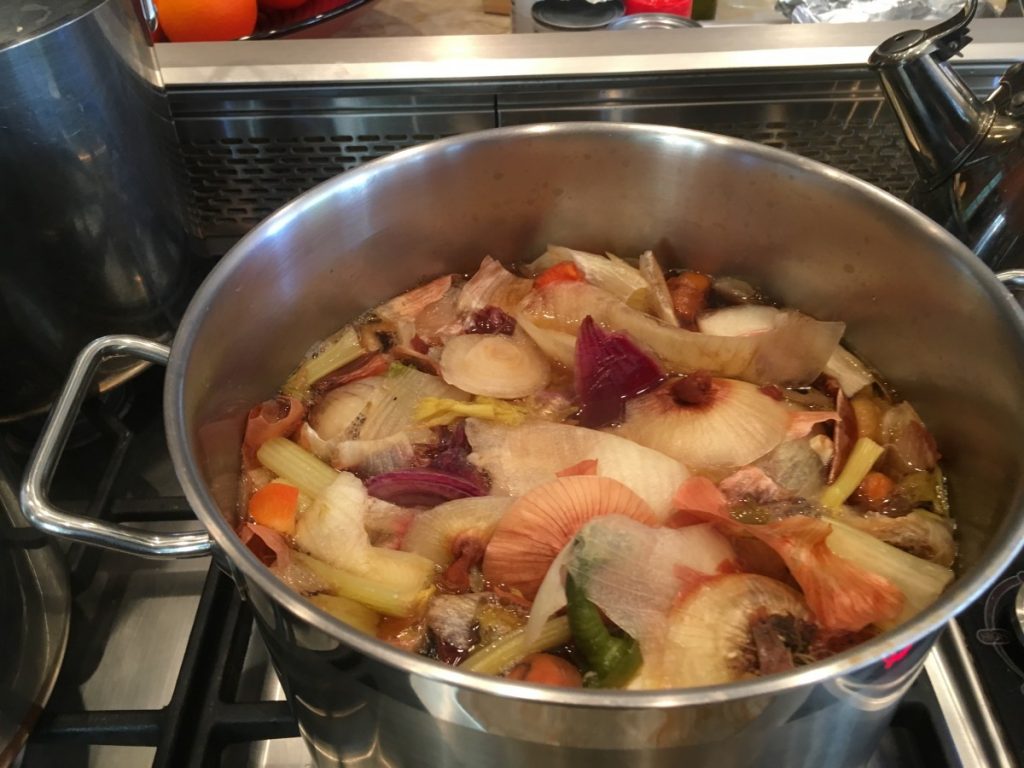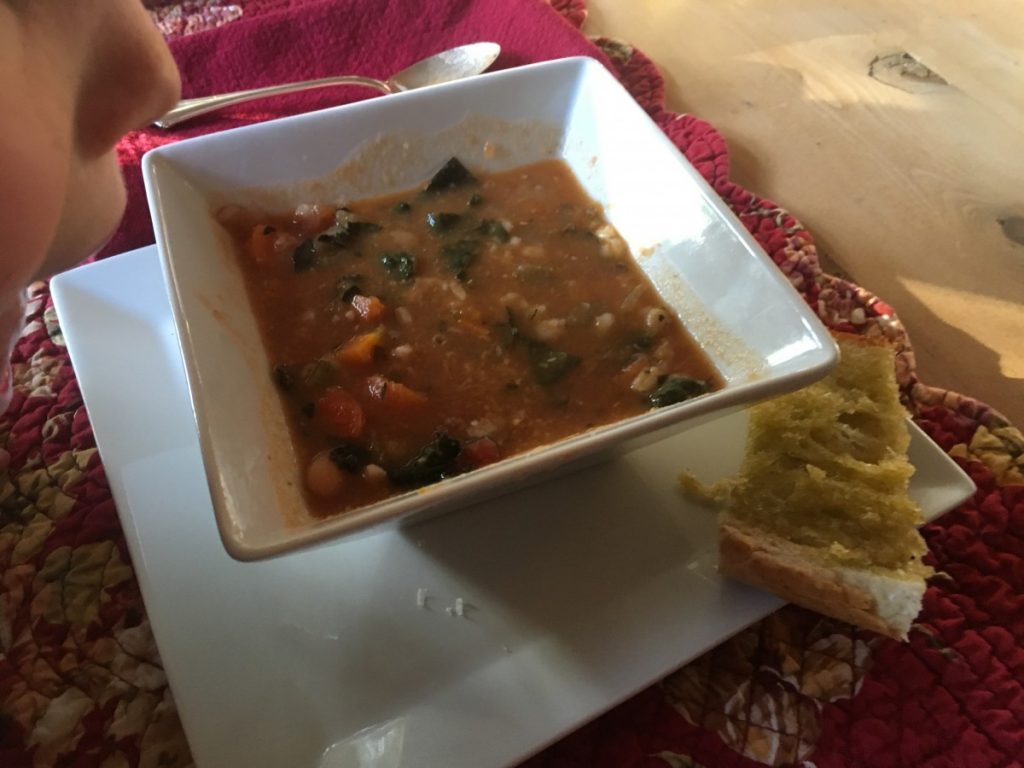We understand that the coronavirus has changed, well, everything. With your kids at home, let us help you with tips on kids in the kitchen.
Here is the beginning of DirectionFive, which is the Culinary part of our program. DirectionOne through DirectionFour will be discussed at a later date.
DirectionFive
Culinary
Introduction
Healthy Kitchens, Healthy Lives is the mantra for this program.
When you understand the foods that support your health, and then you learn to create sumptuous meals for you and the people in your life, you feel satisfied and contented.
In the Kitchen
Kids, like most adults, simply want to jump in and make homemade pizza, but there are basics that need to be learned first, for safety and sanitation reasons, of course, but also so one knows how to measure properly, what size and type of pan to use and other basic information needed for a successful kitchen experience.
Safety and Sanitation
Before you enter the kitchen, tie your hair back if you have long hair, and if you’re sick, stay out of the kitchen altogether. Next wash your hands in warm, soapy water. If you have any cuts or sores, be sure to cover with a bandage. While you’re in the kitchen, if you sneeze, cough, touch your hair, nose or any other body part, or eat, please wash your hands again. You obviously wash your hands well after you use the restroom. If you handle raw meat or fish, please wash your hands before touching any other food. Ideally your clothes and aprons should be clean.
Here are some very important tips to always keep in mind when you’re in the kitchen:
- When you work with food, keep raw foods away from cooked foods.
- Keep food away from cleaning products.
- Wash all raw fruits and vegetables before preparation.
- Rinse off your meats and fish as well, pat dry and leave in the refrigerator until you’re ready to use them. Raw and thawing meats and fish should always be kept on the bottom shelf of the refrigerator to avoid dripping and contamination.
- Do not thaw foods at room temperature; thaw in a proper container in the refrigerator. Do not refreeze food after it’s been thawed.
- Food needs to be held at proper temperatures to avoid the growth of bacteria that can make you sick. Cold foods should be kept at 40 degrees Fahrenheit. Stuffed meat and reheated leftovers should be kept at 165 degrees, beef and other hot food, 140 degrees, fish and poultry, 145 degrees and cooked pork, hamburgers and eggs, 155 degrees.
Kitchens can be dangerous places, with sharp equipment and hot stoves! It was my experience when I had my cooking school that, in order of accidents, potato peelers, graters, knives, and hot stoves and ovens, were the major culprits. With some very basic and very important rules, well learned, accidents rarely happen.
A tip for adults working with kids in the kitchen is to try not to hover. I understand the nervousness about watching an eight-year hold with a knife, but hovering only makes them nervous and makes the kitchen a stressful place, when it should be a warm, nurturing place. When they understand basic kitchen safety and the proper use of equipment such as knives, they’ll be fine.
There is one basic rule when working in the kitchen-stay focused on the job at hand! If you are grating or chopping, your eyes are on that knife and cutting board and nowhere else. When this is learned, accidents rarely happen.
Let’s begin with knives. When choosing a knife, how does it feel in your hand? A ten year old with relatively small hands wouldn’t be comfortable using a twelve-inch chef knife. A good knife can last a lifetime, so choose your knife carefully. A knife store with salespeople who really understand all the intricacies of knives is an invaluable source of information. Here are some basics:
The knife has a blade, which does the cutting. The example, below, is a typical western knife that is sharp on both sides. Japanese knives have blades that are sharp on only one side, as they believe they cut more effectively.
There are various types of blades:
Carbon steel – Our ‘knife –guy’s’ favorite knife because it takes a great edge but discolors when they come in contact with anything acidic like tomatoes or citrus fruit. A carbon knife will rust so be sure to clean and dry them after every use.
Stainless Steel – They don’t rust so taking care of them is much easier, however, they are difficult to keep a good sharp edge.
High carbon stainless steel – Tough, holds an edge and they don’t discolor. The carbon adds strength to stainless but also more cost. A good choice.
Titanium – Much lighter than steel, holds its edge, and is also flexible, so it is a better choice for boning and filleting knives.
The spine is opposite the blade and adds weight and stability. The tip of a knife is at the point and is used for inserting the knife into something and for cutting small items. The tang is that piece of metal that extends from the blade to the back of the knife and the handle attaches to. The tang also gives a knife some weight and balance. Better knives have tangs.
The bolster is that little collar that separates the blade and the handle and adds strength and balance. The bolster can run from the spine to the edge or just part way. You hold onto the handle and it’s important for the handle to feel good in your hand. It can be made out of wood, plastic, composite or stainless steel.
Knives are blocked, forged or sintered.
- Blocked knives are cut from a single sheet of metal usually of the same thickness. Think of using a cookie cutter on rolled dough. The blades are then ground to form the edge and handles are added to the tang. They typically don’t have bolsters and are less expensive to make and therefore buy.
- Forged knives, as the name suggest, are forged, and not stamped. The manufacturer takes metal, heats it up and pounds it into the correct shape using a drop forge machine. These knives typically have bolsters, more weight, and thicker bolsters and cost more to produce. They are better balanced knife that when taken care of properly, can last a lifetime.
- Sintered knives, or Eastern-style knives, is a process where they take a separate blade and fuse it to a separate tang.
Whatever type of knives you choose, you must frequently sharpen them, as a sharp knife is safer than a dull knife. With a dull knife you exert more pressure on the knife, which generally means more accidents. Always hand-wash your knives, dry properly and store where they won’t rub against other knives. Besides a chef’s knife, you will also need a paring knife, which has a short blade and is used for small jobs, a bread or serrated knife, a boning knife for removing meat from joints and a carving knife, for carving and slicing meat.
A few last tips: never try to catch a falling knife! When you carry a knife it should point down and the blade should face backwards. Carry it close to you but not against your body. When you carry your knife to the sink, carry it by itself and not on your cutting board where it could fall. Do not place knives in a sink full of dirty dishes as in retrieving them; you could grab the blade by mistake.
Cutting boards can be made of any number of material, wood, plastic, bamboo or composite, which are various material fused or glued together. Wood boards are the easiest on your knives, but cannot be put in the dishwasher, plastic boards and composite boards can be washed in the dishwasher, but gouges can harbor bacteria, bamboo is a sustainable wood product; whichever you choose, wash it carefully between uses.
Now that you understand more about knives, you need to learn basic knife cuts. The proper knife cut affects cooking time and visual appeal.
Basic Knife Cuts:
- Julienne: A stick cut. Strips 2-2 ½ inches long. 1/8” X 1/8”
- Brunoise: A dice cut. 1/8” X 1/8” X 1/8”. Made from cutting a julienne.
- Batonnet: A strip cut. Strips 2-2 ½ inches long. ¼” X ¼”
- Small Dice: A dice cut. ¼” X ¼” X ¼”. Made from cutting a Batonnet.
- Medium Dice: A dice cut. ½” X ½” X ½”.
- Large Dice: A dice cut. ¾” X ¾” X ¾”
- Mince: Small cut with no specific dimensions made by rocking the knife back and forth.
- Chiffonade: Stacked leaves, rolled up, then sliced thinly.
- Roll Cut: Slice vegetable on the diagonal, roll vegetable 90 degrees and slice gain
- Diagonal Cut: Oval shaped slices. Made by cutting the ingredient at an angle. The knife is held at an angle–the more the angle the shorter the cooking time.









